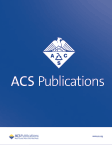Abstract PO1-23-11: Differential m6A modification identified by direct RNA sequencing in endocrine- resistant and sensitive breast cancer cells
IF 3.4
Q2 PUBLIC, ENVIRONMENTAL & OCCUPATIONAL HEALTH
引用次数: 0
Abstract
A major limitation of current adjuvant treatments for the ~ 70% of breast cancer patients with estrogen receptor α–expressing (ER+) primary breast tumors is the development of acquired and adaptive endocrine therapy (ET) resistance and metastatic spread. Chemical modifications of transcribed RNAs alters their cellular location, stability, and, for mRNAs, translation into proteins. N-6 methyladenosine (m6A) is the most common modification of mRNA. We tested the hypothesis that m6A epitranscriptomic changes alters the transcriptome resulting in changes in targets in pathways contributing to the metastatic cascade in ET-resistant breast cancer cells. We used an unbiased approach of direct mRNA sequencing using the Oxford Nanopore MinION platform on polyA-selected mRNA from MCF-7 luminal A breast cancer cells and ER+, ET-resistant LCC9 breast cancer cells treated with vehicle control or 100 nM 4-hydroxytamoxifen (4-OHT) for 24 h. In addition, MCF-7 cells were treated with the METTL3 (the catalytic methyltransferase that adds the methyl group from S-adenosylmethionine (SAM) to the adenosine on the N6 position) inhibitor STM2457 to identify m6A positions and transcripts directly regulated by METTL3 activity. Computational analysis directly identified m6A locations in transcripts. We examined the differential modification rate (DMR) between MCF-7 cells +/STM2457 treatment, between MCF-7 and LCC9 cells with vehicle control treatment or with 4-OHT treatment and within each cell line with 4-OHT treatment. We identified 183 and 3,097 genes with m6A DMRs between vehicle-treated and 4-OHT-treated MCF-7 and LCC9 cells, respectively. For 4-OHT-treated cells, we identified 2,401 and 2,638 genes with m6A DMRs in MCF-7 and LCC9 cells respectively with 1,760 genes in common. We identified many genes with multiple m6A modifications, e.g., AMIGO2 appeared to have 14 m6A sites at DRACH motifs in MCF-7 cells, but none were m6A modified in LCC9 cells. Enrichment by Pathway Maps, Process Networks, and GO Processes were performed. Overall, our data suggest a role for altered m6A positions in transcripts and pathways involved in ET-resistance in breast cancer. Citation Format: Belinda Petri, Bailey Valdes, Kellianne Piell, Eric Rouchka, Carolyn Klinge. Differential m6A modification identified by direct RNA sequencing in endocrine- resistant and sensitive breast cancer cells [abstract]. In: Proceedings of the 2023 San Antonio Breast Cancer Symposium; 2023 Dec 5-9; San Antonio, TX. Philadelphia (PA): AACR; Cancer Res 2024;84(9 Suppl):Abstract nr PO1-23-11.PO1-23-11:通过直接 RNA 测序鉴定内分泌抗性和敏感性乳腺癌细胞中不同的 m6A 修饰
约 70% 的乳腺癌患者患有雌激素受体 α 表达(ER+)的原发性乳腺肿瘤,目前的辅助治疗方法的一个主要局限性是会产生获得性和适应性内分泌治疗(ET)耐药性和转移性扩散。转录 RNA 的化学修饰会改变其在细胞中的位置、稳定性,对于 mRNA 而言,还会将其翻译成蛋白质。N-6 甲基腺苷(m6A)是 mRNA 最常见的修饰。我们测试了一种假设,即 m6A 表观转录组的变化会改变转录组,从而导致抗 ET 乳腺癌细胞转移级联通路中的靶标发生变化。我们使用牛津纳米孔 MinION 平台对 MCF-7 管腔 A 型乳腺癌细胞和 ER+、ET 抗性 LCC9 乳腺癌细胞的 polyA 挑选的 mRNA 进行了无偏见的直接 mRNA 测序,这些细胞接受了载体对照或 100 nM 4-hydroxytamoxifen (4-OHT) 处理 24 小时。此外,用 METTL3(催化甲基转移酶,将 S-腺苷蛋氨酸(SAM)的甲基加到 N6 位上的腺苷上)抑制剂 STM2457 处理 MCF-7 细胞,以确定受 METTL3 活性直接调控的 m6A 位和转录本。计算分析直接确定了转录本中的 m6A 位置。我们检测了MCF-7细胞+/STM2457处理之间、MCF-7细胞与LCC9细胞之间(车辆对照处理或4-OHT处理)以及每个细胞系内部(4-OHT处理)的差异修饰率(DMR)。我们分别在车辆处理和 4-OHT 处理的 MCF-7 和 LCC9 细胞之间发现了 183 个和 3,097 个具有 m6A DMRs 的基因。对于 4-OHT 处理的细胞,我们在 MCF-7 和 LCC9 细胞中分别发现了 2401 和 2638 个具有 m6A DMRs 的基因,其中有 1760 个基因是共同的。我们发现了许多具有多个 m6A 修饰的基因,例如,在 MCF-7 细胞中,AMIGO2 在 DRACH 基因座上似乎有 14 个 m6A 位点,但在 LCC9 细胞中却没有一个基因被 m6A 修饰。我们通过途径图、过程网络和 GO 过程进行了富集。总之,我们的数据表明,m6A位置的改变在乳腺癌抗ET的转录本和通路中起着作用。引用格式:Belinda Petri, Bailey Valdes, Kellianne Piell, Eric Rouchka, Carolyn Klinge.通过直接 RNA 测序鉴定内分泌抵抗性和敏感性乳腺癌细胞中不同的 m6A 修饰[摘要]。在:2023 年圣安东尼奥乳腺癌研讨会论文集;2023 年 12 月 5-9 日;德克萨斯州圣安东尼奥。费城(宾夕法尼亚州):AACR; Cancer Res 2024;84(9 Suppl):Abstract nr PO1-23-11.
本文章由计算机程序翻译,如有差异,请以英文原文为准。
求助全文
约1分钟内获得全文
求助全文
来源期刊

ACS Chemical Health & Safety
PUBLIC, ENVIRONMENTAL & OCCUPATIONAL HEALTH-
CiteScore
3.10
自引率
20.00%
发文量
63
期刊介绍:
The Journal of Chemical Health and Safety focuses on news, information, and ideas relating to issues and advances in chemical health and safety. The Journal of Chemical Health and Safety covers up-to-the minute, in-depth views of safety issues ranging from OSHA and EPA regulations to the safe handling of hazardous waste, from the latest innovations in effective chemical hygiene practices to the courts'' most recent rulings on safety-related lawsuits. The Journal of Chemical Health and Safety presents real-world information that health, safety and environmental professionals and others responsible for the safety of their workplaces can put to use right away, identifying potential and developing safety concerns before they do real harm.
 求助内容:
求助内容: 应助结果提醒方式:
应助结果提醒方式:


